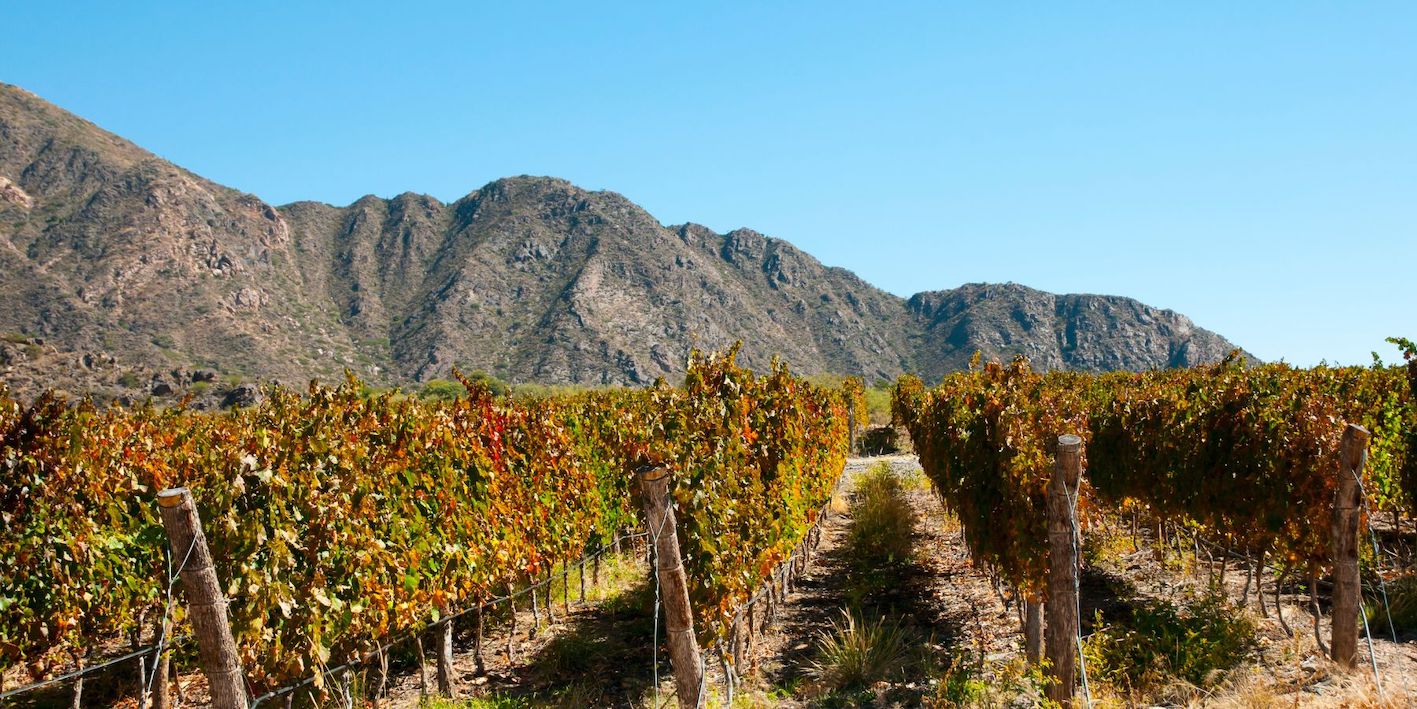The territory with the greatest variety of vines in America, bodegas where people speak with an Italian accent, vineyards in the desert or at high altitude. Here's what you need to know about Argentine wines, produced between the 25th and 40th parallels and to keep an eye on as they gain space in the global wine sector.
Argentina is a territory naturally suited to the production of grapes, and therefore of wine: a true paradise. Let's see what there is to know about Argentine wines.
1. How much wine does Argentina produce?
Argentina is the sixth largest wine producer in the world (after Italy, France, Spain, the United States and Australia): with approximately 1,200,000 liters of wine per year it contributes to 5% of world production.
2. What is the climate like in Argentina?
The climate in Argentina is rather uniform, generally arid and dry, which creates good conditions for the grapes: diseases and mold do not arise. The lots of sun favors the perfect ripening of the grapes, the temperature range and the poverty of the soil guarantee a good potential for complexity and elegance.
3. In which markets are Argentine wines found?
Argentine wines are consumed mainly within the country: exports are still marginal (equal to around 20% of the total), even if there are wineries attentive to foreign markets and quality, which have earned international consideration. The main markets are the United States, UK, Canada and Brazil.
4. When does viticulture begin in Argentina?
It was the Spaniards who introduced European vine species and started the production of wine in Argentina. We are at the beginning of the sixteenth century, along the Atlantic coast, while in the western part it arrives from Peru or Chile. The territory that soon becomes the most important in terms of quantity of wine produced is that around Mendoza.
- Read also: what is blind tasting
5. What impact has phylloxera had on the production of Argentine wine?
None: phylloxera (the insect that has destroyed over half of Europe's vineyards since the mid-nineteenth century) has never appeared in Argentina.
6. How is the quality system for Argentine wine structured?
In Argentina there are no laws and regulations like in Europe. The Instituto Nacionale de Vitivinicultura controls the production of grapes and the export of wine but the qualitative aspects are delegated to the individual wineries (there are over 1200 wineries in Argentina). There are also simple rules for the labeling of wines: if the grape variety is shown on the label, the wine is produced with at least 80% of that grape.
It must be said that until the middle of the last century, wine production in Argentina was mass, the great crisis of the internal market in the nineties forced producers to completely review their production philosophy. From there begins a new story, based on quality, which has led Argentina to be one of the most interesting emerging producers in the world.
- Read also: how to taste wine
7. What grape varieties are grown in Argentina?
Argentina is the country with the greatest ampelographic variety (a term that indicates the study of different vines) in all of America, with over 218,232 cultivated varieties. The most widespread grape varieties are malbec (over 45,000 hectares cultivated), cereza (around 27,000 hectares), bonarda (over 18,000 hectares), criolla grande (over 14,000 hectares).
Chardonnay contributes mainly to the white wines that are exported, followed by chenin blanc , moscatel de Alejandria . Torrontés , an aromatic white grape, is decidedly interesting.
Among the black grapes: barbera , bonarda and sangiovese (introduced by the Italians), tempranillo introduced by the Spanish. And then the international cabernet sauvignon , merlot and malbec , the latter undoubtedly the grape that produces the most interesting red wines of Argentina.
Malbec, in particular, is native to the south-west of France, where however it is considered a minor grape variety. The French agronomist Michel Aimé Pouget brought it to Argentina, a fact that saved this grape, which found a perfect habitat here.
8. What wines does Argentina produce?
Argentina mostly produces red wines (55/60% of production). The rest is shared between rosés and whites.
9. What characteristics do Argentina's vineyards have?
We are talking about an area of approximately 224,000 hectares of vineyards. Argentina's vineyards are among the highest in the world, reaching up to 3000 meters in the areas at the foot of the Andes. The considerable availability of water coming from the Andes determines high yields and low concentration of substances in the grapes, an aspect that leads to a loss of quality. Argentine producers combat this problem by limiting the flow of water into the vineyards as much as possible.

10. What are the wine production areas in Argentina?
The most important Argentine wine regions are to the east, along the eastern foothills of the Andes. From North to South we meet:
Salta , where mainly Torrontés (white), Malbec, Cabernet Sauvignon and Tannat (red) are produced. The region has an exceptional record: it has some of the highest vineyards in the world, some at over 3,000 meters above sea level. Such extreme climatic conditions generate wines of great purity and concentration.
Tucmàn , where Malbec, Cabernet Sauvignon, Syrah, Tannat, Bonarda (red) and Torrontés (white) are mainly produced.
Catamarca , where mainly Malbec, Syrah, Bonarda (red) and Torrontés (white) are produced.
La Rioja (the oldest), where especially Malbec, Cabernet Sauvignon, Syrah, Bonarda (red) and Torrontés (white) are produced.
San Juan , where mainly red wines are produced including Malbec, Bonarda, Cabernet Sauvignon, Tempranillo.
Mendoza (the most important wine region, with 70% of total production). The region has unique characteristics in the world: the vineyards grow in desert conditions, shielded from the rain by the Andes. The wines produced in the region are mainly Malbec, Bonarda, Cabernet Sauvignon , Syrah and Tempranillo, Pinot noir for the reds; Chardonnay , Torrontés, Sauvignon Blanc and Chenin Blanc for the whites. Important sub-areas of Mendoza are Luján de Cuyo (famous for elegant Malbecs often produced from old vines) and Maipú. Mendoza mainly produces red wines, including Malbec, Bonarda, Cabernet Sauvignon, Syrah and Tempranillo.
Patagonia , where reds are mainly produced: Malbec, Pinot noir, Merlot, Cabernet Sauvignon, Syrah. The vineyards are planted at altitudes of 200-250 meters above sea level. The climate is cold, due to the latitude and the cold desert winds, however mitigated by little rainfall and excellent sunshine.




